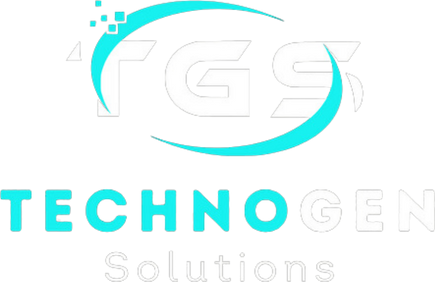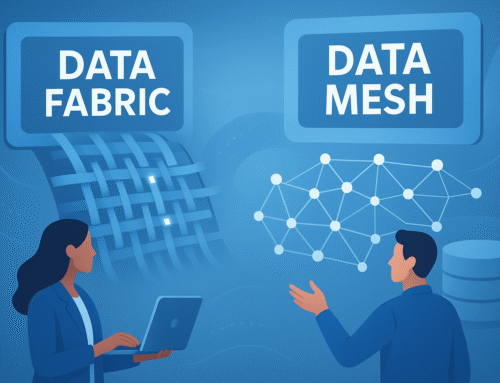In the modern dynamic world, artificial intelligence (AI) is not a futuristic notion anymore it is an aspect of business. AI is changing how organizations operate, not only by automating the mundane activities but also by giving future-based predictions. However, the truly transformative change that is going to occur in 2025 is as follows: it is not a human-designed and AI-designed battle but a collaboration between the two entities to create value.
This synergy is restructuring industries, making them more productive, and opening the way to a new phase of innovation. We should discuss how companies can embrace the potential of human creativeness and AI intelligence combined to expand.
The emergence of the human-AI Cooperation.
AI is an incredibly good data analyzer, pattern recognizer and automatter of tasks. Humans, in their turn, are more emphatic, critical, strategic, and innovative. Coming together, organizations will receive the best of both worlds: speed, accuracy, and efficiency combined with the ability to be creative, judge and have emotional intelligence.
Rather than a replacement of people, AI is becoming a co-pilot a partner that enhances human potential.
Critical Spaces of Co-Creation of Value between AI and human beings.
1. Decision-Making and Strategy.
AI has the ability to analyze large volumes of data within a few seconds and detect patterns that may be overlooked by humans. However, strategic business decisions cannot be made without a context and experience as well as without ethical considerations, all of which are unique to humans. Human and AI can jointly make decisions that are faster, smarter and fair.
Example: AI is used in a retail company where executives make decisions based on the consumer trends predicted by AI and how the trend could be aligned with brand values and long-term strategy.
2. Innovation and Product Development.
The speed of AI-based design, simulations and prototypes is much higher than conventional methods. These outputs are then perfected by humans with the use of creativity, customer empathy, and storytelling.
Example: In the automotive sector, the AI proposes efficient car designs according to aerodynamics, and the human designers influence the beauty and the emotional attractiveness.
3. Customer Experience and Personalization.
Recommendation engines and chatbots are excellent AI-driven engines that are scalable at offering personalized services. Nevertheless, the true customer satisfaction is usually based on the human empathy that is listening, understanding and connecting.
Scenario: A customer support AI gets general questions answered in real-time, and human representatives intervene in complicated and emotional cases, which would form a hybrid experience.
4. Talent and Workforce Development.
AI can be used to determine areas of skills deficiency, training needs, and career advancesment opportunities to employees. However, human beings are very instrumental in mentorship, leadership and cultural alignment.
Examples: AI is used by HR teams to monitor the performance of employees and suggest training courses, and managers guide and coach them on careers.
5. Risk management and Operational Efficiency.
AI eliminates mistakes, monitoring processes and forecast risks. These systems are monitored by humans who make sure that there is an ethical practice, compliance, and flexibility.
Example: In financial institutions, AI will identify fraudulent transactions immediately, and humans will make decisions regarding the relationship with the customer after the warning.
The Human Edge in an Artificial Intelligence World.
However, AI has several weaknesses that human beings alone possess:
Creativity- The capacity to envisage new things.
Empathy – Being able to know human feelings and needs.
Ethics and Values – Leading to a good use of technology.
Complex Problem-Solving -Addressing problems without explicit data.
Sustainable and ethical AI ecosystems will be created in those organizations that identify and exploit this human advantage.
Developing a Human-AI Collaborative Culture.
In order to reap the maximum benefits of AI, companies need to create a culture where human beings and AI learn, develop and innovate as one. Here’s how:
Train and Develop Workforces.
Educate train personnel on the application of AI.
Concentrate on digital literacy, data analysis, and AI ethics.
Promote Human-AI Trust
Promote the openness of the AI systems.
Make sure that the employees recognize the enabling nature of AI, rather than its threatening nature.
Redesign Workflows
delegate monotonous work to AI.
Allow human beings to concentrate on value-added activities like creativity and customer interaction.
Encourage Experimentation
Give employees an opportunity to test AI tools in their daily operations.
Reward new human-AI partnerships.
Ensure Ethical AI Practices
Create construction rules to avoid prejudice, discrimination, and abuse.
Introduce human beings in the ultimate decision making when it comes to ethics.
Actual Cases of Co-creation between Human and Artificial Intelligence.
Healthcare: AI-based scans of medical images have the potential to diagnose a condition in thousands of cases, whereas doctors provide diagnosis with understanding and empathy.
Finance: AI interprets the market trends, whereas human analysts develop funding plans according to the objectives of clients.
Education: AI tailors educational journeys, and educators engage students and entice them to think critically.
These illustrations show that the future does not lie in an option between humans and AI but rather one of a combination of strengths to achieve more.
The Future of Value Creation between Humans and AI.
In the future, AI will be even more incorporated into everyday activities. Success will however be determined by the effectiveness of organizations to strike a balance between automation and human judgment. Companies that adopt co-creation will:
Increase the efficiency by removing inefficiencies.
Enhance innovations by fast experimentation.
Provide customers with excellent services via tailored, but compassionate encounters.
Create a lasting development that meets the needs of people with technology.
Conclusion
Instead of asking the question whether an AI will overtake humans, it is now necessary to ask how can humans and AI collaborate. Co-creation is the future of organizations, and AI can be used to offer speed and precision and human creativity and empathy.
This partnership will not only allow businesses to survive the digital revolution but they will also be at the forefront of this revolution. The businesses that will survive in 2025 and further will be the ones which will realize one thing: humans and AI are greater than they are single.


Leave A Comment